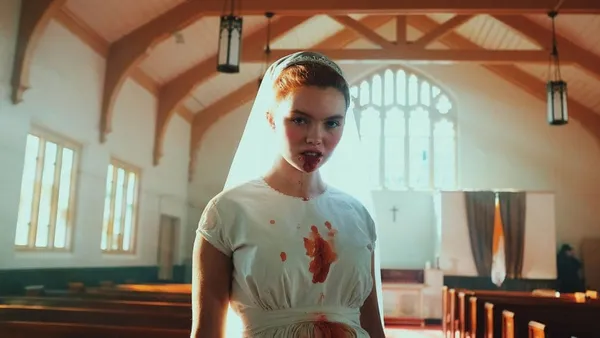 |
| Lauryn Canny in Darlin' |
The story of a Christian community taking in a feral child and teaching her the values of civilisation is one that as often been told in cinema but never quite the way it is in Darlin’. This blistering sequel to Lucky McKee’s The Woman marks the feature début of Pollyanna McIntosh as a director. Whilst she reappears as the Woman onscreen, the main focus of the film is on a teenage girl who has been in her care for many years and is now completely feral. When Darlin’ seeks help from a hospital, she is taken into the care of a Catholic charity which sees her as a wonderful opportunity for spiritual and financial improvement, if it can just civilise her, convert her, teach her to behave as it has so many others. it’s a film with some rapid action sequences and subtle drama – a lot to take on, I suggest to Pollyanna, for a first timer.
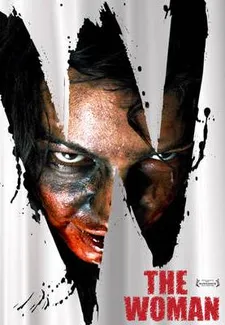 |
| The Woman poster |
“It’s all my fault because I wrote it so I don’t have much to complain about,” she laughs. “You know, it’s always a challenge making a film and I’ve been lucky enough to be on set for many years with folk who like challenges as well, so I feel like I’ve learnt a lot. But yeah... we ended up changing the schedule just a week before to be four days less than expected so I definitely knew we had a challenge ahead of us but it’s so much about the team that you put together and who you have around you and I just had such a confident DP and such a confident group of actors who were also very open to their own needs and I felt the communication was great so it was just about getting on with it and getting it done. In an indie film it’s always going to be a case of things changing but I felt really comfortable in that role. So I wouldn’t say I was nervous about it going in. I was just excited.”
When did she decide that she wanted to do more with the character of the Woman?
“It was really a case of the producer of both Offspring and The Woman coming to me and asking if I would direct the sequel... I came back and said, ‘Well, if I can write it then I know that I’ll be able to live with this ting for two years,” you know? Which is really the time that it takes from conception to getting it out there. And when that was agreed upon I knew I was in, I was ready for the challenge.
“I had written before and I’d also directed a 35 minute short which was kind of a proof of concept for a feature, and so that had given me some great experience. I’d also directed theatre before as well... I knew that this was an amazing chance I just couldn’t pass up.”
Does she see the Woman as a character who is developing and changing over the course of the three films she appears in?
“Yeah, absolutely. I believe that I have achieved this and I hope that I have for the fans as well. But I feel that the Woman is who she’s always been. There was such amazing insight in the film offspring that took me inside of the Woman’s mind, so Jack Ketchum’s character is who she’s always been but that took me so deeply in side the Woman’s mind that in some ways she’s also become my own, and it helped me that [he] was so pleased with what I’d done with her that I had his blessing taking her the ways that I took her. I think her situation has changed a lot and I think that Darlin’s influence on her, there’s true love there and there’s this real connection.”
Lauryn Canny is remarkable as young Darlin’. She captures a lot of the distinctive body language that Pollyanna has brought to her character. How did they go about working together to achieve that?
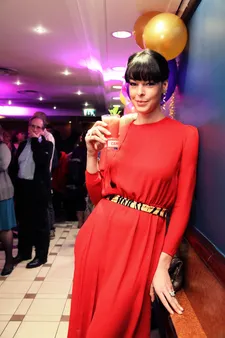 |
| Pollyanna McIntosh Photo: Max Crawford |
“She was really interested in what research I’d done in playing the Woman and she wanted to know absolutely everything,” Pollyanna says. “I know that she watched that film a lot and I gave her all my influences and how I’d worked on it, and she took it from there. But I really feel like she came into that audition absolutely ready to go. She attributes a lot of her performance to me but when I watched her in that room before we’d ever met before, I saw what a incredible talent she was and how prepared she was to play this role, and it was so exciting to see. I think we’ll be seeing a lot more of her and I’m very excited that she’s been nominated for the Bingham Ray award at Galway Film Fleadh, which is coming up later this month, so I’ll be keeping a keen eye on that and hoping that she wins. She definitely deserves it.”
Both characters must be very satisfying to play, I suggest, because actresses are rarely afforded the opportunity – at least in cinema – to use their whole bodies in such an expressive way, to put across that tremendous physicality rather than being required to be pretty.
“Yeah, and I think Lauryn found that very freeing and I certainly found that very freeing in playing that character of the Woman in all of the films that she’s been in. I think it’s a wonderful key to that character that she’s not got any of that societal bullshit about what is a woman? or what is feminine? and I love the fact that her very name is the Woman, you know? It’s sort of alternative to being quiet, good, putting others first, not stepping above your station, not showing anger, not being in charge – all this shit. She just rolls with it and does it her way. Obviously I don’t want to be a vicious killer but I’m very grateful to that character for giving me that freedom to just live in that body. It was very liberating and I think Lauryn felt the same way... It’s almost like therapy. to be paid to be that way is great.”
There are other women in the film who lead semi-feral existences...
“I wrote these different female characters at different levels of either breaking that boundary or being held down by it. Sister Jennifer, for instance, lifts herself out of it, and Darlin’s, again, being the heart of the piece – she couldn’t be brave enough for herself because she’d become too indoctrinated but when it came to standing up for Darlin’ and for all the other girls in the care home too...” she pauses. We agree to be careful about spoilers.
 |
| Darlin' poster |
“There are different levels of coming out of these restrictions,” she continues. “I wanted to make her not a saint but somebody who could be perceived as a bad guy too in certain places. It’s not cut and dry. It’s not that it’s an easy task to speak out and to stand up for yourself and others. People do it in their own time.”
Whereas The Woman saw her character physically restrained for much of its duration, this film seems to be about the subtler ways in which parts of society try to control women.
“It’s insidious,” she says. “It’s a insidious thing in society, especially American society, this idea of piety and Puritanism throughout the culture... I’ve heard a lot of things coming out of the Me Too movement where people say why didn’t they say something? I think there’s a lot of people who have more freedom in their lives or haven’t been emotionally abused and then physically abused, they don’t understand sometimes how that works and therefore are more likely to go on the aggressive side and to victim blame because they don’t want to believe, I think, that it can be that complicated, and they like to see things in black and white. I wanted to show how identity and community can be part of it as well and that’s maybe easier to comprehend. It’s not like I’m trying to make a didactic film but I wanted people to experience it through these other people’s eyes... and hopefully for them to come away with a different understanding.”
It’s also interesting to see a film that falls into the girls’ school genre but is doing something different with it.
“Yeah. Again, a lot of those films are written or directed by men. And some of them are very good, but films like The Virgin Suicides, you know, where a woman was in charge I think was a little more complex and nuanced... I was very conscious that we were going to be putting a bunch of girls together in a girls’ school and they were all going to be wearing uniforms and it could be easily eroticised. Even with a female DP, I really has to make sure that we were, well, to say ’I know we’ve all been indoctrinated into what’s beautiful but let’s not focus on her bottom in that skirt! Bring it up, let’s get her fully in the frame, let’s ensure that there’s no objectification here.’”
This is doubly important, she says, because there’s a key scene in which that kind of objectification does take place and she wanted the audience to find it uncomfortable.
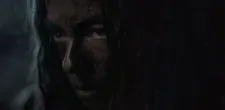 |
| The Woman looking for her Darlin' |
There’s a marvellous scene early on in the film where the girls are alone and one of them is advising the others on how to survive a snake attack in the jungle. “That not only is a way to see the girls living in their own way,” says Pollyanna, “it shows that the way they can survive in this is through each other and through sharing with each other.”
She stresses that she wanted to let them speak for themselves. “I wanted to cast it with young women who I thought were not necessarily the super pretty traditional looking girls. I mean they’re all gorgeous but in a very natural way. I wanted them to be make-up-free and have their hair natural and get a bit of dirt under the fingernails and show a true experience.” The snake conversation, she says, reflects the idea of breaking the system from within.
I note that I have often thought of children as wild and ‘growing up’ as a process of being tamed.
“Absolutely! We’re all essentially wild starting off... Really that wildness is so important to me and it was really interesting in post, one of the notes that I got was ‘I think Billie should be more afraid when Darlin’ comes up behind her in the woods,’ and I said no because the whole point is that they’re not afraid of that wildness. They understand it. They know what it is, they’re excited by it... and the children being that way helps Darlin’ to survive in there as well.”
Might it be good for women to retain a bit more of that wildness?
“Abso-bloody-lutely! I think it would be good for all of us. And yes, I think there’s a lot of holding down of anger and physical expression. I think the witches had it right, you know? You have to go about naked at night. That’s something that’s good for us.”
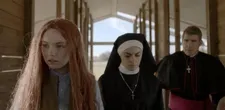 |
| Looking for salvation in Darlin' |
Before we finish, I ask her about her segment in Deathcember, an anthology horror film due out as the end of this year.
“Yeah. I just finished post on that actually. I’ve got a male lead in that. He’s actually my fiancé, Casey van Maanen. He’s not an actor ordinarily, he’s an art department guy, but we had a lot of fun shooting that and he did a great job. It’s 24 different directors making these five minute shorts into a feature and I was just given Christmas and horror, that was it. They said ‘We’ll give you this budget, we love your idea, go do what you want, we won’t mess with your edit.’ That was a wonderful opportunity to have and definitely lucky timing for making my next movie. It’s about getting away from it all and trying to escape the commercialism of Christmas... It’s got political overtones of the right against the left but it’s also a good fun ride.”
Darlin’ recently screened at the Edinburgh International Film Festival and will be screening at Fantasia on Monday 15 July. It opens in select cinemas around the US on Friday 12 July and will also screen at Frightfest in August.
























